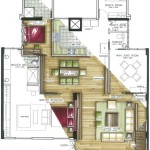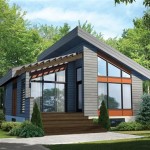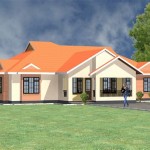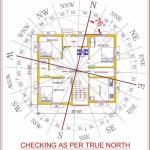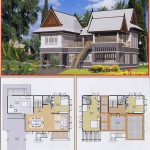Floor Plans in Victorian Architecture
Victorian architecture, a prominent style that flourished in the latter half of the 19th century, is characterized by its ornate details, intricate designs, and diverse floor plan layouts. These homes, often grand in scale, were designed to accommodate the needs of an expanding middle class, showcasing a shift in social norms and family life. Understanding Victorian floor plans provides insight into the era's values, lifestyle, and architectural trends.
The Evolution of Victorian Floor Plans
Victorian floor plans evolved significantly over the course of the period, reflecting changing social and economic conditions. Early Victorian homes, influenced by the Gothic Revival movement, often featured asymmetrical layouts, steep roofs, and a focus on verticality. These homes emphasized grandeur and display, with elaborate staircases and spacious drawing rooms for entertaining guests. As the century progressed, the Queen Anne style emerged, introducing more practical and functional elements. These homes featured a greater emphasis on comfort and livability, with well-defined spaces for family life, including dedicated bedrooms, kitchens, and dining rooms.
Later Victorian homes, influenced by the Arts and Crafts movement, embraced a simpler aesthetic. These homes often featured open floor plans with fewer internal walls, allowing for a more fluid flow of space and a sense of connection between rooms. The emphasis shifted from ostentatious displays to a focus on craftsmanship and the use of natural materials.
Key Features of Victorian Floor Plans
Victorian homes, regardless of style, share several common features in their floor plan layouts:
Central Hallway:
A central hallway was a defining characteristic of Victorian homes, serving as the main thoroughfare through the house. It provided access to the primary living areas, bedrooms, and often the staircase leading to the upper floors. The hallway itself was often decorated with intricate moldings, stained glass windows, and family portraits.
Formal Parlor:
The formal parlor, typically located at the front of the house, was reserved for entertaining guests and showcasing the family's social status. It was often furnished with elegant furniture, including a piano, a fireplace, and elaborate draperies. The parlor served as a public space, separate from the more informal family living areas.
Dining Room:
As the Victorian era placed importance on formal meals and social gatherings, a dedicated dining room became a standard feature in most homes. The dining room was typically a large, well-lit space, often featuring a decorative fireplace and ample seating. It provided an area for the family to gather for meals and entertain guests.
Bedrooms:
Victorian homes included multiple bedrooms, with the number and size of bedrooms reflecting the family's size and social status. Master bedrooms were often larger and more elaborate than other bedrooms, featuring a fireplace, walk-in closets, and sometimes private bathrooms. Smaller bedrooms were often designed for children or servants.
Kitchen:
The kitchen, while still an important space, was often located on the lower level of the home and was less grand than the formal living areas. However, Victorian kitchens were equipped with modern conveniences for the time, including a sink, a stove, and ample storage space. As the Victorian era progressed, the kitchen became more integrated with the dining area, reflecting a shift towards informality and a focus on family meals.
Basement:
Many Victorian homes featured a basement, which served a variety of purposes, including laundry, storage, and sometimes even a servant's living quarters. The basement provided valuable additional space for the expanding families of the Victorian era. It also offered protection from the elements and a cool refuge from the summer heat.
Attic:
The attic, located above the upper floor, was often a less finished space, used for storage or occasionally converted into additional bedrooms. It provided a cost-effective way to expand living space without significantly altering the home's exterior. The attic also offered potential for creative uses, such as a studio for an artist or a workshop for a tradesman.
Conclusion
Victorian floor plans provide insights into the era's social values, architectural trends, and the evolving lifestyles of the middle class. These homes, with their grand central hallways, formal parlors, and dedicated dining rooms, reflect a society that placed value on decorum, entertainment, and family life. The evolution of Victorian floor plans, from the ornate grandeur of the Gothic Revival to the simpler functionality of the Arts and Crafts movement, showcases the changing priorities and tastes of the Victorian era.

58 Victorian Floor Plans Ideas Vintage House

Luxurious Victorian Home Plan Builder Ready 3225
Victorian House Plan 3 Bedrms 5 Baths 4756 Sq Ft 134 1071

1879 Print Victorian House Architectural Design Floor Plans

Victorian House Plans Monster

Pin By Chriss Flagg On Architecture Victorian House Plans Mansion Floor Plan

House Plan 98568 Victorian Style With 3017 Sq Ft 4 Bed 3 Bath

Home Plan La Roux Sater Design Collection

Victorian House Floor Plans

One Story Victorian House Plan 86271hh Architectural Designs Plans

